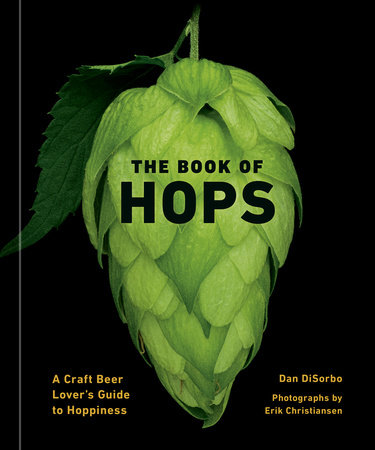Introduction
All my friends are hopheads. For some, it’s the spicy bitterness of a noble hop that has them fiending for more; others salivate with an uncontrollable Pavlovian response over the juicy fruit bouquet from new aroma hop varieties. For me, it’s the sheer dankness of certain hops that entices my taste buds, bringing joy with each and every sip. As the most luscious ingredient in beer, hops offer a full spectrum of distinct aromas, delicious flavors, and soulful bitterness to the multitude of tasty beers we imbibe. Hop character is often the defining feature in some of the world’s most celebrated beer styles.
Part science, part art, part magic, beer is one of the oldest and most consumed beverages on the planet. Since the days of our Neolithic ancestors, this strange brew has helped build civilizations and empires, revolutionized industries and cultures, and continues to transcend all borders to unite beer drinkers far and wide. The culture surrounding beer today grows increasingly complex with more breweries, ingredients, and styles seemingly introduced daily. The hundreds of styles available in the craft beer aisle can be a brave beer lover’s dream or leave a curious newcomer overwhelmed and confused. How do we navigate the winding road to beer nirvana? Understand the difference between dryhopped IPAs and barrel-aged Saisons? In short, how do we pick which beer to drink?
You’ve likely seen playful interpretations of the hop adorning many of these craft beer labels. Breweries are even using modern renditions of the hop cone as the main icon for the identity of their entire brand. It’s time we look behind the lure of these labels to find real answers to all the questions we have about hops. What are they? Where do they come from? How do they impact all these different beer styles? Why do they taste so delicious? And, of course, which of these beautifully packaged beers is the best?
While no one can answer that last question, this book will tackle the rest of them by unlocking the secrets of the hop. It is time we honor and respect this virtuous flower with a book worthy of its importance to both contemporary beer culture and all humankind. The scientific name of the plant is
Humulus lupulus, and it’s a native species to several continents, very hardy, and now grown the world over (at times referred to as the “wolf of the woods,” for a more suitably badass translation of its Latin name). The cherished flowers of the female plants provide indispensable contributions to brewing; they inspire and shape beer craft culture and language; and they are what sets beer apart from all other beverages.
Simply put, without hops, nearly all of our best-loved craft beers and breweries would not exist. Every beer we drink today utilizes hops. As a natural preservative, hops allow a once fragile brew to survive. As a bittering agent, hops create a perfectly drinkable balance that allows beer to thrive. The essential oils concentrated inside the lupulin glands of the hop cones supply creative brewers with a cornucopia of aromatic and flavor profiles that allow the complex hoppy character of beer to evolve with consumer tastes.
New hop varieties being cultivated today continue to entice even the most discerning craft beer drinkers. For generations, some of the greatest minds in the world have employed technologically and scientifically advanced farming techniques and breeding programs to create a vast menu of options for brewers to select from. Patient hop breeders and farmers invest a decade of their lives to bring a new hop variety to market. Then complicated, massive logistical networks guarantee their quality and timely delivery to breweries, where only then can this vital ingredient contribute all its green and golden glory to beer.
The Book of Hops isn’t a scientific dissertation on hops, an in-depth history of beer, or a step-by-step manual to brewing. Much more qualified people have written about those topics. Rather, this book offers an indispensable explanation of the symbiotic relationship between hops and craft beer, providing a clear window into an oftenintimidating subject. We will capture how wonderful hops are with simple words, infographics, and ridiculously detailed photos, while we smell, sip, and savor all the tasty different styles of beer we love to put into our bellies. Drinking beer should be, above all else, fun—a liquid reminder to stop and smell the roses (or, in this case, hops). Think of this guide as a new drinking companion on your way to becoming an enlightened hophead.
Copyright © 2022 by Dan DiSorbo, photographs by Erik Christiansen. All rights reserved. No part of this excerpt may be reproduced or reprinted without permission in writing from the publisher.


















